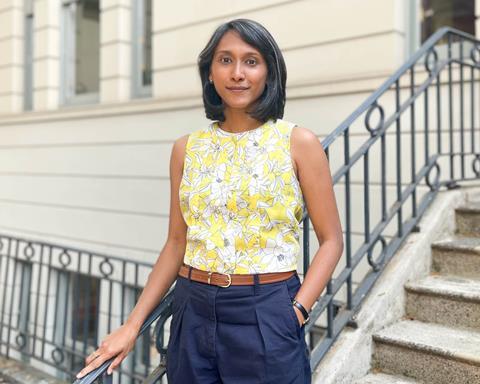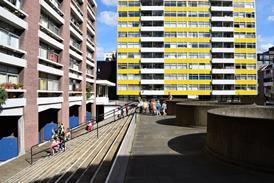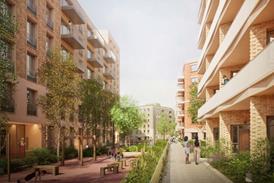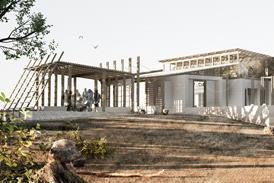Drawing on personal experience and historical insight, Regine Kandan argues that heritage is key to creating places that resonate

Everyone loves a good story. It drives our imagination, creates a personal connection and even teases our senses. But what is it that elevates a ‘building’ to a ‘piece of architecture’?
And what elevates an individual building to a place, with a unique, cherished and joyous sense of its own character? Why are we drawn to such places, why do we remember them, and why do we care?
It is the intangible qualities in the physical constructs surrounding us that have the ability to create a sense of familiarity, of belonging, of discovery and of intrigue, and ultimately, a ‘sense of place’. Heritage has the power to do that.
We commonly hear that the greenest building is the one that already exists. I equally believe that the strongest place-makers are our heritage sites, and that placemaking is uncovering stories of the past and retelling them for the future.
The Romans coined the phrase ‘genius loci’, referring to protective spirits that reside in a place, which was often adorned with features such as cornucopias or snakes. In the 18th century, Alexander Pope in his Epistle IV says, ‘Consult the genius of the place in all’, which emphasises appropriation in what one does to the identity and provenance of the landscape that one intervenes in.
In the 20th-century publication The Eyes of the Skin, Juhani Pallasmaa expresses that ‘The elements of architecture are not visual units or gestalt; they are encounters, confrontations that interact with memory.’ It is the balance between the material and immaterial that provokes the human perception and sensory experience.
The building had suddenly come alive to me
A few years ago, I worked on a regeneration project involving a Town Hall that was built in 1935. The interiors featured beautiful walnut joinery, marble and travertine-lined walls and nickel bronze metalwork.
The entrance floor was a three-toned terrazzo in a curious zigzag pattern. The space was architecturally beautiful as an example of Art Deco features specifically selected by its New Zealand-born architect Reginald Uren.
On my first visit, the long-serving caretaker casually remarked that ‘Reg’ designed the flooring to mimic the pattern of the visitors’ queue to the ticket counter, which was dressed in Ashburton and Perrycot marble with a nickel bronze screen. Above the ticket counter, a circular hole in the marble lining hinted at the presence of a former clock.
‘Did you know…’ continued the caretaker, ‘There used to be 76 clocks in this building? They were all wired to one synchronome clock which controlled all the others. That way, everyone in the building would get to their meetings at the same time.’
The building had suddenly come alive to me. I was transported back to the 1930s Town Hall, seeing a stream of North Londoners waiting in line for a concert, dance or pantomime.
I could picture the people who might have worked here: engineers, surveyors, clerks of works, the treasurer of the borough, or members of the local community coming to vote, settle a bill or lodge a complaint.
Many in the built environment industry work day in and day out on existing spaces, buildings and sites without really knowing much about their intangible qualities, and thus without knowing much about their past. We should take a moment to discover their origin, their story of change and evolution (their hidden narratives).
If not, how can we, as designers, engage with the physical constructs that we work in, and how can we design and build spaces for people to connect with at that intangible level? Ultimately, how can we conserve and, more importantly, ensure the continuity of its ‘sense of place’?
The radical thinkers of the late 1960s emphasised the importance of the human spirit
In the post-war era, the architecture world saw a shift in social transformation which influenced the direction of design and town planning. The rise in use of prefabrication, reinforced concrete and new construction techniques resulted in faster and more efficient building processes.
The mid-century modern movement influenced design by emphasising practicality and functionality. In the midst of this change in the physical aspects of design arose a parallel means of social and political expression which explored alternative ways of living.
The radical thinkers of the late 1960s emphasised the importance of the human spirit by creating powerful satirical imagery of architecture with the absence of its people, devoid of human attachment.
The Italian group Superstudio created images of an infinite, expansive and monolithic form traversing buildings, cities and landscapes. The ‘Continuous Monument’ was devoid of style, of ornament, of form and colour, therefore devoid of human expression and appropriation.
‘Supersurface’ was an abstract grid where social norms such as eating, working and playing would ‘plug’ into a piece of ‘infrastructure’. The architecture could have been anywhere, could have been part of any culture and any identity.
The British group Archigram took animation of cities to an entirely new level, with buildings almost like organisms with giant legs carrying their people from context to context. These interventions would ‘pop up’ and disappear in a manner of activating landscapes.
Are we so obsessed about making what is ‘new’ that we no longer value the ‘old’?
Modular construction systems moved around and plugged into their environments, not too dissimilar to the ‘Supersurface’ of their Italian counterparts.
The satire of Jacques Tati’s 1967 film Playtime best illustrates the notion of human interaction in an anonymous landscape. People move in straight lines in a sterile and homogeneous city, with only the reflection of the Eiffel Tower to suggest that the film is set in Paris.
Architecture and its interior design are purely utilitarian. The desire for its inhabitants to interact is comically depicted through conversations taking place between the curtain walling of a modernist skyscraper.
As the film nears its end, we see the city folk breaking out of their social rules to reveal their true personalities – that of vibrance, diversity and unpredictability. They desired self-expression, ownership and belonging to the spaces they inhabited. They were in search of a ‘sense of place’.
We have moved on, but through various stylistic modern approaches to designing our buildings and cities, have we neglected the history of the built environment that surrounds us?
Have we focused so much on the future that we forget to celebrate the past?
Are we so obsessed about making what is ‘new’ that we no longer value the ‘old’?
We are creating new townscapes, public realms and new communities through various initiatives, urban strategies, regeneration schemes and masterplans. To what extent has the history of the site, its cultural and social context been explored?
As guardians of the built environment, we must champion the uncovering, reinstating and celebrating of the narratives of our historic buildings and sites
How much have we understood of the past community, and how much thought has been given to bringing forth their hidden narratives? More importantly, how much thought has been given to enriching the present and future communities?
We are surrounded by beautifully crafted buildings rich in history, often unique. Many of these have been undervalued or are at risk of demolition. Many others are altered beyond recognition, while some have lost evidence of their past.
These are the places with hidden narratives, where the building’s history, artefacts, anthropology and archaeology have been shrouded by neglect, ignorance or camouflage, often trapped beneath layers of modernity. The stories of our built environment risk extinction, and in the design of new buildings, we risk repeating the monotonous and impersonal concepts so explicitly challenged by our 1960s colleagues.
As guardians of the built environment, we must champion the uncovering, reinstating and celebrating of the narratives of our historic buildings and sites. We must take the concept of ‘stewardship’, as described by William Morris – of looking after the heritage environment for the next generation – to the next level.
The retelling of their stories and the reuniting of the tangible with the intangible has the power to not just repair neglected fabric, but the power to revive what has been lost, reveal what has been forgotten and ultimately restore a ‘sense of place’.
Postscript
Regine Kandan is an associate at Donald Insall Associates.
















1 Readers' comment